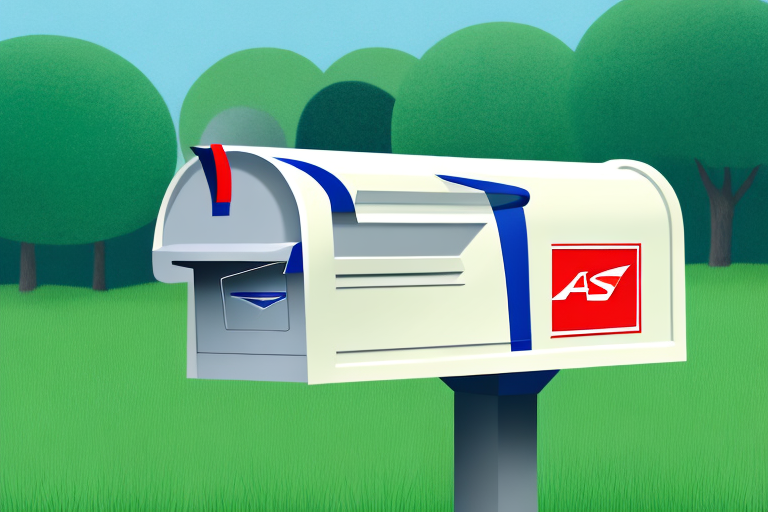Comparing USPS and UPS Shipping Rates: Which Is the Better Option?
When it comes to shipping packages, choosing the right carrier can significantly impact cost, speed, and reliability. Two of the most popular shipping services are the United States Postal Service (USPS) and United Parcel Service (UPS). This article provides an in-depth comparison of their shipping rates, delivery options, customer service, and other critical factors to help you decide which carrier best suits your needs.
Introduction to USPS and UPS Shipping Services
USPS is a government-operated postal service offering a wide range of shipping options, including First Class Mail, Priority Mail, and Priority Mail Express. In contrast, UPS is a private carrier providing various shipping solutions, such as ground, air, and international services.
One advantage of USPS is its flat-rate shipping options, which can be cost-effective for heavier items. Additionally, USPS boasts a broader network of post offices and drop-off locations, enhancing convenience for sending and receiving packages. Conversely, UPS is renowned for its reliable tracking system and faster delivery times, especially for international shipments. UPS also offers additional services like insurance and signature confirmation for added security.
Understanding the Shipping Rates of USPS and UPS
Both USPS and UPS have distinct pricing structures influenced by factors such as package weight, destination, and delivery timeframe. Generally, USPS is more affordable for smaller items, while UPS tends to be cheaper for larger and heavier packages.
Both carriers offer various shipping options, including ground, priority, and express, which can affect shipping costs. Additionally, discounts may be available for specific shipment types, such as military or non-profit organizations. It’s advisable to compare rates and services from both USPS and UPS to determine the best fit for your shipping requirements.
Factors That Influence the Shipping Rates of USPS and UPS
- Package Size and Weight: Larger and heavier packages typically cost more to ship. USPS offers flat-rate boxes that are ideal for specific weight limits.
- Distance: Shipping longer distances generally increases the cost. Remote or rural areas may incur higher shipping fees due to additional transportation costs.
- Delivery Speed: Faster delivery options, such as overnight shipping, come at a premium.
- Shipping Options: Choices between standard ground, expedited shipping, and other services influence the overall cost.
Calculating Shipping Rates for Different Package Sizes and Destinations
To estimate shipping rates for USPS and UPS, you need to know the package's weight, dimensions, and delivery destination. Both carriers provide online calculators on their official websites to help determine shipping costs based on these factors.
Keep in mind that rates can fluctuate based on the time of year and any ongoing promotions or discounts offered by the carriers. Additionally, certain destinations may have restrictions or additional fees for specific package types, such as hazardous materials or oversized items. Always review the carrier’s policies and potential fees before shipping.
Comparing the Pricing Structures of USPS and UPS
USPS offers various pricing options, including:
- Flat-Rate Boxes
- Regional Rate Boxes
- Priority Mail
- First-Class Mail
- Parcel Select Ground
In contrast, UPS provides different pricing structures for each of its shipping services, including:
- Ground
- Air
- International
- Freight
When selecting a pricing structure, consider the package size, weight, and travel distance. USPS might be more cost-effective for smaller, domestic packages, whereas UPS could be better for larger or international shipments.
Another consideration is the level of tracking and insurance provided. USPS includes tracking and basic insurance for all services, while UPS offers more comprehensive tracking and insurance options, particularly for higher-tier services. This could be crucial depending on the value and importance of your shipment.
Understanding the Delivery Options Offered by USPS and UPS
USPS provides delivery services such as:
- Priority Mail Express
- Priority Mail
- First-Class Mail
- Parcel Select Ground
UPS offers delivery options including:
- UPS Ground
- UPS Air
- UPS Worldwide Express
While both carriers offer similar services, USPS includes flat-rate shipping options for certain packages, which UPS does not. Additionally, UPS provides a broader range of international shipping options. These differences are essential to consider when selecting a delivery service that aligns with your specific needs.
Examining the Reliability and Speed of USPS and UPS Shipments
Both USPS and UPS are known for their reliable and swift delivery services, but UPS often delivers faster, particularly for international shipments. USPS is favored for its dependable domestic delivery track record.
USPS offers more affordable shipping options for small packages and envelopes, making it a popular choice for individuals and small businesses. Additionally, USPS has an extensive network of post offices and drop-off locations, enhancing accessibility, especially in rural areas. Ultimately, the decision between USPS and UPS depends on your specific shipping priorities and requirements.
Evaluating the Customer Service Provided by USPS and UPS
When it comes to customer service, both USPS and UPS offer email, chat, and phone support. However, UPS generally has a stronger reputation for customer service. USPS can sometimes be challenging to reach during peak seasons, such as December and January.
Despite this, USPS offers advantages like lower shipping rates for small packages and flat-rate boxes, as well as a more extensive network of post offices and drop-off locations, enhancing convenience for many customers. If customer service is a top priority, UPS may be the preferable choice.
Comparing the Insurance Policies of USPS and UPS for Package Protection
Both USPS and UPS provide insurance options to protect against lost or damaged shipments. USPS offers standard protection, while UPS provides more extensive coverage for higher-value items.
The cost of insurance varies between the two carriers. USPS charges a flat rate of $0.85 for packages valued up to $50, with costs increasing for higher value items. Conversely, UPS charges a percentage of the declared value of the package, with a minimum fee of $2.70. Comparing insurance costs between USPS and UPS is essential to determine the most cost-effective option for your specific shipment.
Analyzing the Tracking Capabilities of Both Services for Shipment Visibility
USPS offers free tracking number services, enabling customers to monitor their shipments online. However, USPS tracking information may sometimes lag or be less detailed, particularly for international shipments.
UPS boasts a more robust tracking system with real-time updates and notifications, providing precise location and estimated delivery times. This enhanced visibility ensures customers are consistently informed about their shipment's status.
Examining the Environmental Impact of Using USPS or UPS for Shipping
USPS has a commendable environmental track record, largely due to its use of renewable energy sources and initiatives to reduce waste and save trees. Both USPS and UPS offer carbon-neutral shipping options.
The environmental impact of shipping also depends on factors like distance and transportation mode. For example, using UPS’s rail transport for cross-country shipments may be more eco-friendly than USPS’s truck transport. Additionally, consolidating multiple packages into a single shipment can minimize the overall carbon footprint.
Choosing Between USPS or UPS Based on Your Specific Needs
Ultimately, the choice between USPS and UPS hinges on your individual shipping needs and preferences. For small items, USPS is often the better choice due to lower rates and extensive drop-off locations. Conversely, for large or heavy packages, UPS might be more cost-effective and offers faster delivery options.
Delivery speed is another critical factor. USPS provides various delivery options, including Priority Mail and Priority Mail Express, which are suitable for quick deliveries. UPS offers expedited shipping options like Next Day Air and 2nd Day Air, ideal for shipments requiring specific delivery timeframes.
Cost is always a consideration. USPS generally offers lower rates for smaller packages, while UPS may be more economical for larger or heavier shipments. Comparing rates and services from both carriers is recommended to find the best value tailored to your specific shipping needs.
Conclusion: Which Service Is the Better Option for You?
In summary, both USPS and UPS provide a variety of shipping options catering to diverse needs and preferences. Depending on your shipping requirements and budget, either USPS or UPS could be the optimal choice. It's crucial to compare prices, delivery times, and customer service to ensure you select the best shipping option for your specific needs.
For international shipping, UPS may be the better option due to its expansive global network and more reliable tracking services. On the other hand, USPS might be more affordable for domestic shipping, especially for smaller packages.
Additionally, consider packaging requirements. USPS has strict guidelines regarding package size and weight, whereas UPS offers more flexibility in terms of dimensions and weight. Always check the packaging requirements before choosing a shipping service to ensure compliance and avoid unexpected costs.




















